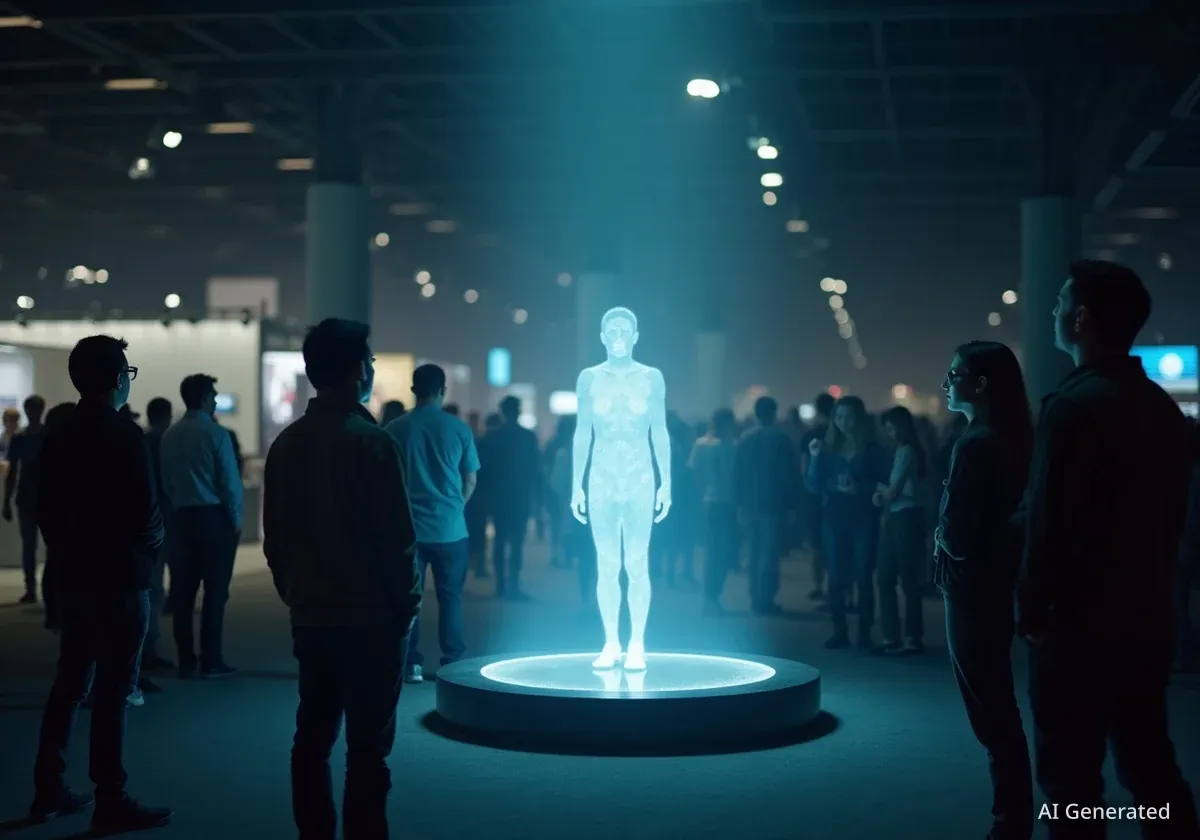LA Comic Con is set to feature a life-sized, AI-powered hologram of the late Marvel Comics creator Stan Lee. For a fee of $15 to $20, attendees can participate in a group Q&A session with the digital avatar, an attraction that has generated significant controversy nearly seven years after Lee's death.
The project's organizers defend the initiative as a tribute, while critics have described it as disrespectful and exploitative. The technology uses a vast archive of Lee's own words to generate responses, aiming to create an interactive experience for fans.
Key Takeaways
- An AI-powered hologram of Stan Lee will be featured at this weekend's LA Comic Con.
- Fans can pay $15-$20 for a group Q&A session with the digital avatar.
- The announcement has been met with widespread criticism from fans and media outlets.
- Organizers state the AI is trained exclusively on Stan Lee's own interviews and writings to ensure authenticity.
- The project's continuation depends on fan reception at the event.
Fan Backlash and Organizer Defense
The announcement of an AI-powered Stan Lee avatar at LA Comic Con was met with immediate and strong criticism. Many fans and publications expressed discomfort with the concept of interacting with a digital recreation of a deceased public figure. Terms like "disrespectful," "ghoulish," and "demonic" were used in online discussions and articles to describe the project.
In response, Chris DeMoulin, CEO of the parent company behind LA Comic Con, has asked for the public to reserve judgment until they have seen the hologram in person. He emphasized the importance of "informed criticism" and suggested that most negative reactions were based on the concept alone, not the final product.
"We're not afraid of people seeing it and we're not afraid of criticism," DeMoulin stated. "It's unfortunate that a few people have really negative things to say about it, sight unseen."
DeMoulin's position is that the team has worked to create an experience that feels genuine and honors Lee's legacy. He acknowledged the technology is not perfect but believes it has been tested enough to provide a positive interaction for fans.
A History of Holograms at LA Comic Con
This is not the first time LA Comic Con has utilized hologram technology. In 2019, the convention introduced Boffo the Bear, a 7-foot-tall animated character who hosted a talent show. However, Boffo was not powered by AI; he was controlled in real-time by actor Mark DeCarlo using motion capture technology.
The Technology Behind the Digital Avatar
Creating the interactive Stan Lee required a collaboration between several technology companies. The physical display is a life-sized volumetric screen-in-a-box developed by Proto Hologram, the same company involved with the Boffo the Bear experience.
The artificial intelligence that powers the avatar was developed by Hyperreal. According to its CEO, Remington Scott, the company creates "bespoke" digital versions of celebrities using a customized AI ecosystem. For the Stan Lee project, the AI model was trained on an extensive archive of his past work.
Training an AI on a Legacy
The training data for the AI model included decades of material. Organizers gathered tapes from dozens of convention panels, along with written and spoken content from the Stan Lee Universe brand. The goal was to ensure the AI's responses were based entirely on things Lee himself had said or written.
Development and Cost
The creation of the AI Stan Lee avatar was a significant investment, with costs reported to be in the range of "tens of thousands into six figures" of dollars. The development process involved extensive testing and refinement to capture Lee's unique manner of speaking, including his pauses and catchphrases.
Remington Scott of Hyperreal noted that this project aligns with Lee's own vision. "Stan Lee had actually begun digitizing himself while he was alive, with the vision of creating a digital double so his fans could interact with him on a larger scale," Scott said.
Ensuring Authenticity and Respect
A primary concern with AI language models is their tendency to "hallucinate" or generate false information. DeMoulin stated that he shared this concern initially but extensive testing has shown the model to be reliable. He claims the team has asked the hologram "hundreds and hundreds" of questions to test its boundaries.
"The only words that are gonna be in Stan's mouth are Stan's words," DeMoulin asserted, adding that he has not personally witnessed the model generate fabricated content.
To manage the interactions, the system includes "content governors." These are programmed safeguards to prevent the AI from commenting on inappropriate topics. For example, if asked about politics, the avatar is designed to redirect the conversation back to the Marvel universe. The AI will also acknowledge when it does not know the answer to a question if the topic was not part of its training data.
Handling Difficult Questions
The system is also prepared to address controversial topics within Marvel history, such as Lee's relationship with artist Jack Kirby. According to DeMoulin, the avatar will discuss their "honest disagreements" while maintaining a respectful tone, reflecting how Lee might have answered the question himself.
This approach is part of a broader effort to frame the experience as a respectful tribute rather than an attempt to replace the man himself. "We want to make sure that people understand that we are not trying to bring Stan back from the dead," DeMoulin explained. The avatar will even introduce itself as a holographic representation designed to answer questions about Marvel trivia.
The Future of the AI Stan Lee
The organizers acknowledge the ethical sensitivities surrounding the use of AI to recreate deceased individuals. DeMoulin stated that he understands why the concept "feels wrong to people" and recognizes the potential for such technology to be used exploitatively.
He expressed confidence that once fans interact with the hologram, they will see it as a delightful and consistent extension of Lee's legacy. The project received conditional approval from the Stan Lee Legacy brand, managed by Bob Sabouni, who insisted that the final product must be exceptionally well-executed.
Ultimately, the fate of the AI Stan Lee will be decided by the fans attending LA Comic Con. DeMoulin has made it clear that the project's future is dependent on its reception this weekend.
"I suppose if we do it and thousands of fans interact with it and they don't like it, we'll stop doing it," he concluded. "If it turns out, for some reason, this isn't that, we won't do it."





